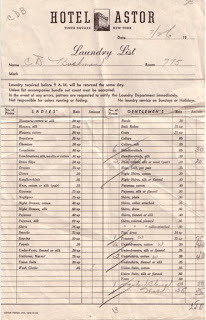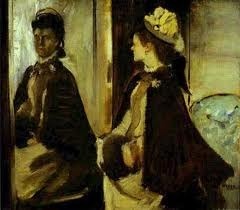7 Considerations When Writing Descriptions
Thanks to Jenyfer for her post yesterday. Most of us haven't had to pick up stakes without notice, especially not knowing if or when we can get back to what we considered "normal." And don't forget, she's got a prize for one commenter, and you have until Friday to enter. Scroll down and leave a comment under her post if you haven't already.
On Monday, I talked about how descriptions are tied into the depth of POV you're using for your story. I write deep POV, generally 3rd person. I prefer it, so this post is geared toward descriptions using that viewpoint.
Seven things to consider when writing descriptions.
 1. What's happening in the story? Is it an action scene? If so, would your character really be noticing what you've spent three paragraphs describing? If bullets are flying, or the bad guys are on the way, or even if they think the bad guys might be on the way, where's their attention going to be focused? They're likely to be listening and watching—but for things 'bad guy' related, not that the sounds of the surf reminds them of that delightful vacation they took five years ago to Hawaii—and, this is definitely not the place to stop and have them remember what they did on that vacation.
1. What's happening in the story? Is it an action scene? If so, would your character really be noticing what you've spent three paragraphs describing? If bullets are flying, or the bad guys are on the way, or even if they think the bad guys might be on the way, where's their attention going to be focused? They're likely to be listening and watching—but for things 'bad guy' related, not that the sounds of the surf reminds them of that delightful vacation they took five years ago to Hawaii—and, this is definitely not the place to stop and have them remember what they did on that vacation.
2. Who is your character? Would a guy who's idea of a good time is sitting on the couch, thumb on remote, flipping between 3 football games actually notice (or even know) that the woman entering the room at a banquet is wearing a specific designer label? Would he recognize the music playing in the room as Vivaldi? Would he know the painting on the wall is an original (or copy) of a Degas? Would he describe the color of the walls as mauve, taupe or ecru? Does he know what those colors are?
3. Where is your character? Often, you'll see a character mentioning that the character entering the room is wearing a "grey wool suit" or a "red silk blouse" or something to that effect. I don't know about you, but I can't recognize fabrics from a distance—heck, I probably wouldn't recognize them if I touched them. Can you spot the difference between 'silk' and 'silky'? These sorts of observations, while adding to description, can slow the pace if it's not something that would be logical for the character to recognize. Those sorts of details put the author on the page.
4. What's your character's emotional state? I mentioned this one in Monday's post. Even observant people will "miss" stuff if they're distracted. If they're falling in love, their world will probably center around the person they're falling in love with. If they're angry, they're going to be tied up in the physiological responses that go along with that extra adrenaline. Are they worried about a loved one? Have they just been forced to pack up and leave their home? We tend to turn our thoughts inward, and don't pay a lot of attention to details of things around us.
5. Are you showing the reader your research? While it's true that readers (myself included) like learning new things as they read, bombarding them with facts, however interesting, means you're stopping the story. Would your character be thinking about the architect who designed the building she's passing? If so, if there's a logical reason, if it makes sense for the character to be thinking about it, then go for it. Otherwise, make sure you're not just showing off.
6. How much description do you really need? And is this the best place to show it? I know one author who will stop at the beginning of any chapter that moves to a new location, and her character will take it all in. I find myself skimming those parts, as they've never seemed to have any bearing on the story itself. With other authors, if something is mentioned, you can be darn sure it's there for a reason.
 When a character enters a room, how much do you need to show? Usually, less is more. A laundry list of everything will probably bore your reader. Pick out a few items that give the impression of the room without mentioning each one, and again, keep it true to your character. In an early draft of Finding Sarah, I had my cop hero checking out the heroine's living room. There was a reason for it, as someone had been in her apartment, and they were seeing if there was anything amiss. In that draft, he noticed the two bargello print chairs in the heroine's living room. But why would he know they were bargello? Since he wouldn't, he merely noticed "two patterned upholstered armchairs."
When a character enters a room, how much do you need to show? Usually, less is more. A laundry list of everything will probably bore your reader. Pick out a few items that give the impression of the room without mentioning each one, and again, keep it true to your character. In an early draft of Finding Sarah, I had my cop hero checking out the heroine's living room. There was a reason for it, as someone had been in her apartment, and they were seeing if there was anything amiss. In that draft, he noticed the two bargello print chairs in the heroine's living room. But why would he know they were bargello? Since he wouldn't, he merely noticed "two patterned upholstered armchairs."
 7. Avoid the cliché pitfalls. If you're writing deep POV, it's going to be a bit harder to show things your character takes for granted. Think about it. Do you run your fingers through your long, auburn curls? I doubt it. You run them through your hair, to be sure, but are you thinking about much more than that? Likewise, are you writing, "her flowered blue silk skirt swished as she walked?" Would you think of those details, or just that your skirt is making swishing sounds. And please, avoid the overused look in the mirror gambit unless you have a very good reason—and can do it well. Why is your character looking in the mirror? It's usually better to wait for another character to show up so you can see things through their eyes, or through conversation. When you show details a character isn't likely to think about, you're moving out of deep POV. And if you're writing first person, you definitely need to be inside your character's head. (image: Edgar Degas - Madame Jeantaud in the mirror)
7. Avoid the cliché pitfalls. If you're writing deep POV, it's going to be a bit harder to show things your character takes for granted. Think about it. Do you run your fingers through your long, auburn curls? I doubt it. You run them through your hair, to be sure, but are you thinking about much more than that? Likewise, are you writing, "her flowered blue silk skirt swished as she walked?" Would you think of those details, or just that your skirt is making swishing sounds. And please, avoid the overused look in the mirror gambit unless you have a very good reason—and can do it well. Why is your character looking in the mirror? It's usually better to wait for another character to show up so you can see things through their eyes, or through conversation. When you show details a character isn't likely to think about, you're moving out of deep POV. And if you're writing first person, you definitely need to be inside your character's head. (image: Edgar Degas - Madame Jeantaud in the mirror)
Any pet peeves about descriptions? Any techniques you find that enhance a story?

On Monday, I talked about how descriptions are tied into the depth of POV you're using for your story. I write deep POV, generally 3rd person. I prefer it, so this post is geared toward descriptions using that viewpoint.
Seven things to consider when writing descriptions.
 1. What's happening in the story? Is it an action scene? If so, would your character really be noticing what you've spent three paragraphs describing? If bullets are flying, or the bad guys are on the way, or even if they think the bad guys might be on the way, where's their attention going to be focused? They're likely to be listening and watching—but for things 'bad guy' related, not that the sounds of the surf reminds them of that delightful vacation they took five years ago to Hawaii—and, this is definitely not the place to stop and have them remember what they did on that vacation.
1. What's happening in the story? Is it an action scene? If so, would your character really be noticing what you've spent three paragraphs describing? If bullets are flying, or the bad guys are on the way, or even if they think the bad guys might be on the way, where's their attention going to be focused? They're likely to be listening and watching—but for things 'bad guy' related, not that the sounds of the surf reminds them of that delightful vacation they took five years ago to Hawaii—and, this is definitely not the place to stop and have them remember what they did on that vacation.2. Who is your character? Would a guy who's idea of a good time is sitting on the couch, thumb on remote, flipping between 3 football games actually notice (or even know) that the woman entering the room at a banquet is wearing a specific designer label? Would he recognize the music playing in the room as Vivaldi? Would he know the painting on the wall is an original (or copy) of a Degas? Would he describe the color of the walls as mauve, taupe or ecru? Does he know what those colors are?
3. Where is your character? Often, you'll see a character mentioning that the character entering the room is wearing a "grey wool suit" or a "red silk blouse" or something to that effect. I don't know about you, but I can't recognize fabrics from a distance—heck, I probably wouldn't recognize them if I touched them. Can you spot the difference between 'silk' and 'silky'? These sorts of observations, while adding to description, can slow the pace if it's not something that would be logical for the character to recognize. Those sorts of details put the author on the page.
4. What's your character's emotional state? I mentioned this one in Monday's post. Even observant people will "miss" stuff if they're distracted. If they're falling in love, their world will probably center around the person they're falling in love with. If they're angry, they're going to be tied up in the physiological responses that go along with that extra adrenaline. Are they worried about a loved one? Have they just been forced to pack up and leave their home? We tend to turn our thoughts inward, and don't pay a lot of attention to details of things around us.
5. Are you showing the reader your research? While it's true that readers (myself included) like learning new things as they read, bombarding them with facts, however interesting, means you're stopping the story. Would your character be thinking about the architect who designed the building she's passing? If so, if there's a logical reason, if it makes sense for the character to be thinking about it, then go for it. Otherwise, make sure you're not just showing off.
6. How much description do you really need? And is this the best place to show it? I know one author who will stop at the beginning of any chapter that moves to a new location, and her character will take it all in. I find myself skimming those parts, as they've never seemed to have any bearing on the story itself. With other authors, if something is mentioned, you can be darn sure it's there for a reason.
 When a character enters a room, how much do you need to show? Usually, less is more. A laundry list of everything will probably bore your reader. Pick out a few items that give the impression of the room without mentioning each one, and again, keep it true to your character. In an early draft of Finding Sarah, I had my cop hero checking out the heroine's living room. There was a reason for it, as someone had been in her apartment, and they were seeing if there was anything amiss. In that draft, he noticed the two bargello print chairs in the heroine's living room. But why would he know they were bargello? Since he wouldn't, he merely noticed "two patterned upholstered armchairs."
When a character enters a room, how much do you need to show? Usually, less is more. A laundry list of everything will probably bore your reader. Pick out a few items that give the impression of the room without mentioning each one, and again, keep it true to your character. In an early draft of Finding Sarah, I had my cop hero checking out the heroine's living room. There was a reason for it, as someone had been in her apartment, and they were seeing if there was anything amiss. In that draft, he noticed the two bargello print chairs in the heroine's living room. But why would he know they were bargello? Since he wouldn't, he merely noticed "two patterned upholstered armchairs." 7. Avoid the cliché pitfalls. If you're writing deep POV, it's going to be a bit harder to show things your character takes for granted. Think about it. Do you run your fingers through your long, auburn curls? I doubt it. You run them through your hair, to be sure, but are you thinking about much more than that? Likewise, are you writing, "her flowered blue silk skirt swished as she walked?" Would you think of those details, or just that your skirt is making swishing sounds. And please, avoid the overused look in the mirror gambit unless you have a very good reason—and can do it well. Why is your character looking in the mirror? It's usually better to wait for another character to show up so you can see things through their eyes, or through conversation. When you show details a character isn't likely to think about, you're moving out of deep POV. And if you're writing first person, you definitely need to be inside your character's head. (image: Edgar Degas - Madame Jeantaud in the mirror)
7. Avoid the cliché pitfalls. If you're writing deep POV, it's going to be a bit harder to show things your character takes for granted. Think about it. Do you run your fingers through your long, auburn curls? I doubt it. You run them through your hair, to be sure, but are you thinking about much more than that? Likewise, are you writing, "her flowered blue silk skirt swished as she walked?" Would you think of those details, or just that your skirt is making swishing sounds. And please, avoid the overused look in the mirror gambit unless you have a very good reason—and can do it well. Why is your character looking in the mirror? It's usually better to wait for another character to show up so you can see things through their eyes, or through conversation. When you show details a character isn't likely to think about, you're moving out of deep POV. And if you're writing first person, you definitely need to be inside your character's head. (image: Edgar Degas - Madame Jeantaud in the mirror)Any pet peeves about descriptions? Any techniques you find that enhance a story?
Published on April 20, 2011 04:00
No comments have been added yet.



